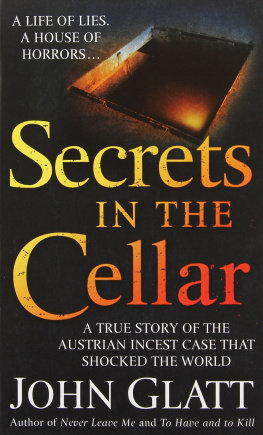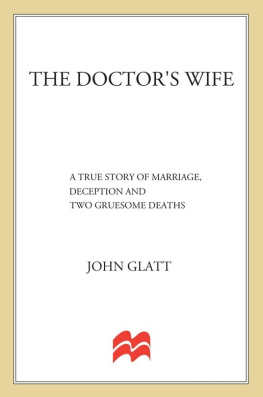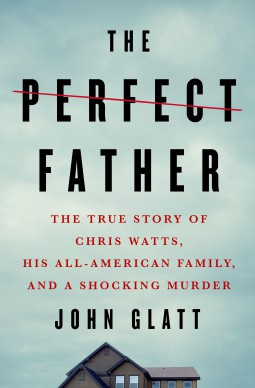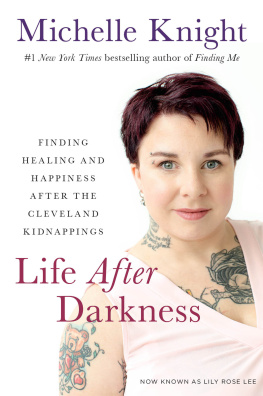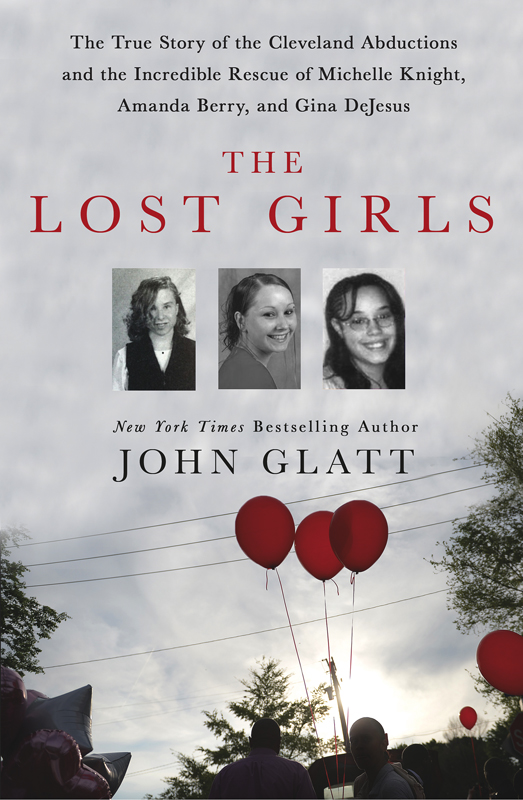Contents
Guide

The author and publisher have provided this e-book to you for your personal use only. You may not make this e-book publicly available in any way. Copyright infringement is against the law. If you believe the copy of this e-book you are reading infringes on the authors copyright, please notify the publisher at: us.macmillanusa.com/piracy.
For Emily and Jerry Freund
At Ariel Castros sentencing, forensic psychiatrist Dr. Gregory Saathoff described his crimes as unprecedented, squarely placing him in an evil class of his own. For more than a decade Castro terrorized Cleveland, abducting girls off the same street and then imprisoning them in his house without arousing any suspicion whatsoever.
The well-respected bass guitarist and mainstay of Clevelands Latin music scene cruelly tricked his own daughters friends into 2207 Seymour Avenue, brandishing a luger handgun and threatening to kill them if they ever tried to escape.
Over the long years of Michelle Knight, Amanda Berry, and Gina DeJesuss captivity, there were many missed opportunities to catch him. Indeed, after his arrest Castro expressed surprise that he had not been caught years earlier, mocking the FBI for not doing its job properly.
In 2008, I wrote about the Austrian monster Josef Fritzl in Secrets of the Cellar , who imprisoned his own daughter, Elizabeth, for more than twenty years, fathering her seven children. Two years later, my book Lost and Found chronicled how Phillip and Nancy Garrido had abducted eleven-year-old Jaycee Lee Dugard in 1991, imprisoning her in their Antioch, California, house for eighteen years, with Phillip siring her two daughters.
But Ariel Castro case is perhaps the most cunning and evil of all.
There are cases where there have been longer term abductions in length, said Dr. Saartfoff, but the specific nature of thisto abduct and keep this number of unrelated victims for this length of time within a neighborhood setting is completely unprecedented.
The Lost Girls is the result of more than eighteen months of research and scores of interviews, both on and off the record. In September 2013, I spent almost two weeks in Cleveland, speaking to Ariel Castros friends and family to get an accurate picture of this evil enigma. I also visited his birthplace of Duey, Puerto Rico, where Castro spent the first six years of his life, which many believe could have shaped his future behavior.
First and foremost, I would like to thank Lillian Roldan for her exclusive interview about her three-and-a-half-year affair with Ariel Castro. Over an emotional lunch in Cleveland, Lillian broke down in tears as she spoke about her feelings for Castro, who she had once hoped to marry. Even now she cannot believe he could be capable of such crimes.
I am also thankful to: Tito DeJesus, Bill Perez, Councilman Brian Cummins, Cesi Castro, Chris Giannini, Craig Weintraub, Scott Taylor, Fernando Colon, Altagracia Tejeda, Angel and Rafael Diaz, Aurora, Daniel, Javier, and Jovita Marti, Angel Cordero, Joe Frolik, and Sgt. Sammy Morris.
Thanks are also due to: Yauco Police Officer Richard Gonzalez for all his help and acting as my translator, Monserrate Baez, Uriel Reyes, Edwin Torres, and Cuyahoga County Court reporter Nancy Nunes.
As always, I would like to thank my editors at St. Martins Press, Charles Spicer and April Osborn, for their continuing encouragement and support. The Lost Girls is my twentieth true crime book for them.
Much gratitude also to Jane Dystel and Miriam Goderich of Dystel & Goderich Literary Management, who are always there for me.
I also want to thank my wife, Gail, Debbie, Douglas and Taylor Baldwin, G.K. Freund, Danny, Cari and Allie Tractenberg, Annette Witheridge, Dan Callister, Virginia Randall, Allen Alter, Roger Hitts, and Ena Bissell.
Around five-fifteen on a sunny spring evening, Aurora Marti dragged her green plastic chair onto her neighbor Altagracia Tejedas stone porch for a chat. There was a smell of barbecue in the warm spring air, and it felt good to be out after the long cold winter.
The oldest resident on Seymour Avenue on Clevelands tough West Side, Aurora arrived almost half a century earlier. The seventy-six-year-old grandmother was among the first wave of Puerto Rican immigrants who settled in the booming steel town after World War II.
At that time it had been a respectable street, but everything changed in the late seventies when I-90 was built, plowing through the neighborhood to connect Cleveland and Pennsylvania. Within a few years, Seymour Avenue had declined into a dangerous drug-infested no-mans-land, full of boarded-up clapboard houses and vacant lots.
Predominantly Latino, the impoverished neighborhoods median annual income is under $15,000 a year, with 70 percent of children failing to graduate high school. At night, drugs and prostitution run rampant, as drivers exit off I-90 to get whatever they need. While some West Side residents describe their under-policed streets as close-knit, others complain of heavy drug use and violence.
But crime was the last thing on Auroras mind that balmy evening in early May 2013, as she chided Altagracia for not taking her allergy medicine and chatted with their friend Angel Cordero.
Suddenly a frantic scream pierced the evening calm. It came from the white house across the street, flying a Puerto Rican flag. Aurora looked up to see a womans hand frantically waving through a narrow gap in the front screen door.
Help me! Help me! the woman yelled. My name is Amanda Berry and Ive been captured for ten years!
Like everyone in Cleveland, Aurora knew about Amanda Berry and her mysterious disappearance a decade earlier, on the day before her seventeenth birthday. Then, a year later, fourteen-year-old Gina DeJesus had also gone missing a couple of blocks away from where Amanda was last seen. Detectives believed the two girls disappearances were connected, and over the years they had become one of the citys biggest mysteries.
Everybody had a theory of what had happened to Amanda and Gina, with most assuming the worst. Indeed, Aurora had often discussed it with her neighbor Ariel Castro, the owner of 2207 Seymour Avenue opposite, where the womans screams were now coming from.
Amanda Berrys dead, Aurora shouted across the street. Everybody knows that.
No, the woman shouted, Ive been kidnapped in this house for ten years by Ariel Castro.
Aurora had known Castro for more than twenty-five years and liked him. The gregarious school bus driver was popular in the neighborhood, as well as being one of Clevelands top salsa musicians. But Aurora also knew he had a terrible temper and could be violent. More than once, he had beaten his former wife and mother of his four children, Nilda Figueroa, so badly that she had run over to Auroras house, begging for sanctuary. Then, after one particularly brutal attack during Christmas 1993, Nilda had taken the children and left the house forever.
Since then things had quieted down at 2207 Seymour Avenue. Ariel Castro now lived alone, and had become increasingly reclusive over the years.
Now, as they crossed the street toward the Castro house, Angel Cordero said they should not get involved in his business. But Aurora insisted on helping the woman, telling Altagracia to stand lookout in the middle of the road and warn them if Castro returned.
Aurora and Cordero then came up on the porch and tried to wrench the glass storm door open, with Amanda pushing as hard as she could from the inside.


